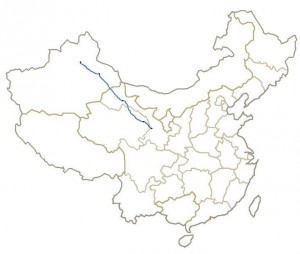China’s Newest Recipe For Solving Its Xinjiang Problem: A High-Speed Rail Line
Forbes, 11 November 2014
By Eric Meyer – At the APEC meeting, President Xi Jinping disclosed the existence of a “Silk Road Fund” consisting of 40 billion dollars aimed at improving links across the Asia-Pacific to “break the connectivity bottleneck” in the region.
This fund is seen as a clever scheme aimed at countering the “pivot” approach of the USA in Far East Asia and bringing the struggle for influence in the region on to a level, namely money and financing, where China can flex its newly acquired economic muscle.
Not coincidentally, three days before, China officially inaugurated its “Lanxin” fast train from Urumqi to Hami (Xinjiang Automonous region), which does the 530km between the two cities in just three and half hours.
When the Hami-Lanzhou section opens in December, the train will initially travel the 1776km of the Lanxin-line at 200km/hour before increasing that speed to 250km/hour in 2017, enabling rail passengers to reach Urumqi from Beijing and Shanghai in 12 and 18 hours, rather than the current 40 and 50 hours.
The enormous investment in this project—23 billion dollars—was necessitated by severe technical hurdles, including the 3600m high Qilianshan tunnel in Gansu Province and 462km of windproof walls built along the Gobi desert stretch of the line. In 2009, these desert winds, which can reach a velocity of 60km per second, overturned a train.
The new high-speed passenger train link will free the old rail line for freight traffic only, potentially leading to a three-fold increase in the shipment of internationally traded goods and thereby creating a powerful economic development tool.
But this quickly raises a very awkward issue, which was noted by a Uighur scholar in Urumqi: “the resources from Xinjiang (cotton, minerals, oil) will go one way, and people from the mainland come the other way.” The challenge is therefore how to avoid plundering Xinjiang’s riches, which will further worsen the large economic gap between Uighurs and Han Chinese.
Uighurs continue to be abused by the police, who restrict their access to passports, and suffer discrimination due to their poor Mandarin and bad image among Han Chinese, who control the local government and law enforcement.
So what is the connection between this train line and the Silk Road fund mentioned at the top of this post?
Simply put, the new line will at least minimize bad feeling in Central Asian countries caused by Chinese mistreatment of the Uighur Muslims. China has already planned to offer the extension of the Lanxin-line as the backbone of its “Silk Road economic belt”, which will run through Kyrgyzstan, Uzbekistan, Turkmenistan, Iran, Turkey, and up to Bulgaria. These states are all keen benefit from the improved overland transportation links promised by the Silk Road Fund, but lack the ability to pay for such projects on their own.
Thus the new Chinese initiative is certain not only to raise interest, but will also help dissipate the ill-feelings generated by repression of the Uighur minority in Xinjiang. China’s largesse here could also smooth tensions between it and neighbors over South China Sea.
Xi was quoted saying that this Silk road fund would “put China at the Centre of the Asian economic zone, drive road-based development in border areas like Xinjiang, and be ‘open’ to active participation by investors from both within and outside of Asia”.
One last word: if accompanied by appropriate policies, this new high-speed train might help to improve Xinjiang’s economic development and improve Uighur living standards. Will it help fill the chasm of mistrust between Uighurs and Hans? Probably not.
As Raffaello Pantucci, a senior fellow at the Royal United Services Institute in London notes, “this economic focus misses the fact that it is not just wealth deprivation that bothers people, but also their feeling that their culture and land is being taken away from them”. But in the next posting, we shall discover two other strange but creative tricks Beijing has up its sleeves for solving its Xinjiang problem!


